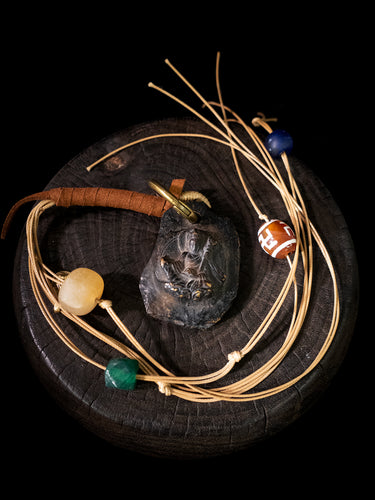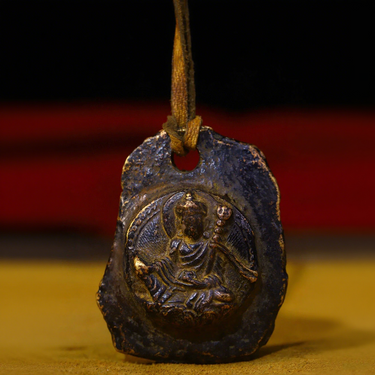
In the intricate world of classical oriental art, where strokes tell stories and colors evoke emotions, Oriental Aesthetics stands as a beacon of unwavering commitment to excellence. Our mission transcends the ordinary; we curate not just art but experiences that resonate with the soul. Among our myriad offerings, the "Tea Ceremony Harmony" emerges as a masterpiece--a ritual of Zen elegance that captures the essence of a cultural legacy.
The Dance of Leaves and Water
In the realm of the delicate dance between leaves and water, the Tea Ceremony emerges as a timeless symphony, a harmonious blend of precision and grace. This ancient ritual, steeped in the rich soil of Zen philosophy, goes beyond being a mere cultural practice—it is a profound testament to the inseparable intertwining of art and life. As curators of this immersive experience, our mission extends beyond showcasing the inherent beauty of classical oriental art; it is an invitation to traverse into a world where each pour and every gesture becomes a brushstroke on the canvas of time.
In the heart of the "Tea Ceremony Harmony," we find the convergence of tradition and mindfulness, creating a space where the mundane transforms into the extraordinary. The delicate handling of tea leaves, the rhythmic pour of water, the precise choreography of utensils--all contribute to a living artwork, an exquisite portrayal of Zen elegance that transcends the ordinary.
Elevating the Senses
At Oriental Aesthetics, our commitment to artistry goes beyond the visual; it extends to the very essence of the senses. The "Tea Ceremony Harmony" is not just an event; it is an orchestrated tapestry of aromas, textures, and sounds—a multisensory journey that elevates the tea-drinking experience to a form of artistic expression. In every carefully selected tea leaf and every artisan-crafted utensil, there lies a meticulous precision aimed at ensuring that each sip is a moment of Zen elegance.
The aroma, wafting through the air, is not merely a scent; it's an invitation to explore the nuances of the tea's origin, the art of its cultivation, and the poetry in its preparation. The textures--the smoothness of the teacup, the warmth of the liquid against the lips—are not just tactile sensations; they are the tangible connections to the rich heritage and craftsmanship that define the tea ceremony. The sounds—the gentle trickle of water, the clinking of utensils--are not mere auditory cues; they are the melodic notes in a symphony of serenity.
In our curation of the "Tea Ceremony Harmony," every element, from the choice of tea leaves to the design of the teapot, is a deliberate act of artistry. The tea room itself becomes a canvas—a sacred space where the senses are awakened, and every moment becomes a celebration of the delicate interplay between tradition and contemporary refinement.
Crafting an Immersive Journey
As curators of this immersive journey, we meticulously select teas that represent not only regional diversity but also the deep cultural roots of oriental art. Each tea, a chapter in a story, is carefully chosen to narrate the tale of its origin and the traditions that accompany it. The utensils, handcrafted by skilled artisans, are not just tools; they are extensions of the artist's soul, ensuring that every movement is a dance, and every preparation is a ritual.
Our commitment to elevating the senses goes beyond the immediate ceremony; it extends to crafting an experience that lingers in the memory. The "Tea Ceremony Harmony" becomes a narrative, a story etched in the participant's mind—a story where every nuance, every flavor, and every scent becomes a vivid chapter in the book of Zen elegance.
A Living Artwork
In the delicate choreography of the "Tea Ceremony Harmony," we witness the transformation of everyday actions into a living artwork. The precision in each gesture, the intentionality in every movement, and the mindfulness in every pour elevate this ancient ritual to a form of performing art. It's not merely about the act of preparing and drinking tea; it's a celebration of the aesthetics of existence—a symphony in which participants become both audience and artists.
The beauty of the "Tea Ceremony Harmony" lies not just in its visual appeal but in the holistic experience it offers. It's an opportunity to be present, to engage the senses fully, and to appreciate the subtle nuances that make each ceremony unique. In this curated environment, participants become active participants in a cultural legacy, contributing their own strokes to the canvas of time.
A Dialogue Between Tradition and Modernity
In the realm of the "Tea Ceremony Harmony," tradition and modernity engage in a harmonious dialogue. Our curated experiences not only pay homage to centuries-old practices but also breathe new life into them. The traditional tea ceremony becomes a contemporary expression—an art form that evolves while respecting its profound roots. We invite you to witness the seamless fusion of heritage and innovation.
As we curate these rituals of Zen elegance, our purpose is clear—to craft memories that linger, like the lingering aroma of fine tea. Each ceremony becomes a narrative, a story woven with the threads of tradition and the colors of innovation. The "Tea Ceremony Harmony" is not just an event; it's an immersive experience that transcends time, inviting you to be part of a cultural continuum.
Our commitment to excellence extends to every detail of the "Tea Ceremony Harmony." From the handcrafted teapots to the intricately designed tea rooms, each element is a stroke of artistry. The ceremony is a canvas, and we, the curators, ensure that every detail contributes to a masterpiece--a visual and sensory symphony that leaves an indelible mark on your soul.
In the grandeur of the "Tea Ceremony Harmony," Oriental Aesthetics extends an invitation—an invitation to immerse yourself in the elegance of Zen, to partake in a ritual where time slows, and every moment is a celebration of life's beauty. Join us as we curate not just ceremonies but experiences that transcend the ordinary—an ode to the artistry of classical oriental traditions.
In the realm of classical oriental art, where strokes of inspiration dance on canvas, we extend our creative embrace to the physical realm. At Oriental Aesthetics, we do not merely curate art; we create living masterpieces. Our focus transcends the canvas, leading us to the serene landscapes of **Zen Gardens**—where nature, art, and spirituality converge in a harmonious dance of tranquility.
Designing Harmony in Nature
In the endeavor to surpass expectations, we delve into the intricate art of crafting Zen Gardens. These aren't just spaces; they are contemplative landscapes meticulously designed to evoke a sense of tranquility and spiritual reflection. Every element, from the arrangement of stones to the careful selection of plants, is a brushstroke on the canvas of serenity.
Stones as Silent Narrators: In the Zen Garden, stones are not just inert objects; they are silent narrators of the journey within. Positioned thoughtfully, they guide the observer through a contemplative passage, inviting introspection and connection with the surrounding nature. Each stone is placed with purpose, contributing to the overall narrative of the garden.
Flowing Waters, Flowing Thoughts: Water, carefully channeled and controlled, symbolizes the flow of thoughts and the passage of time. It is not just a physical element but a metaphysical force, creating a soothing ambiance that encourages spiritual reflection. The sound of flowing water becomes a melody, guiding visitors to a state of serene contemplation.
Botanical Poetry: Plants and trees are not mere adornments but living poetry in the Zen Garden. Each chosen for its symbolic significance, they contribute to the visual and olfactory symphony. From the delicate cherry blossoms symbolizing transience to the resilient bamboo representing strength, every plant has a role in the garden's narrative.
Cultivating Mindfulness through Design
Beyond aesthetics, our Zen Gardens serve as tools for cultivating mindfulness. In the hustle of modern life, these sanctuaries offer a retreat--a space where individuals can pause, breathe, and reconnect with their inner selves.
Walking the Path of Mindfulness: The winding paths within our Zen Gardens are not aimless; they are deliberate journeys into mindfulness. As visitors traverse these paths, the carefully composed scenery prompts a heightened sense of awareness. Each step becomes a meditation, and every turn in the path unfolds a new vista for contemplation.
Meditative Seating: The design of seating areas is not arbitrary but purposeful. From traditional stone benches to intricately carved wooden seats, each element is placed to offer a meditative perch. Visitors can immerse themselves in the beauty around them, finding solace in the simplicity of the design.
Sculpting Tranquility, One Garden at a Time
At Oriental Aesthetics, our commitment to surpassing conventional expectations is exemplified in the creation of Zen Gardens that transcend the ordinary. We sculpt tranquility, one garden at a time, fostering spaces where the boundary between art and nature dissolves.
Symphony of Simplicity: Simplicity is the cornerstone of Zen philosophy, and our gardens echo this principle. In the deliberate absence of unnecessary elements, each garden becomes a canvas of simplicity—a testament to the belief that in simplicity, true beauty is revealed.
Temporal Artistry: Unlike static art, our Zen Gardens evolve over time. Seasons change, plants grow, and stones weather, creating an ever-shifting masterpiece. This temporal aspect adds a layer of depth, inviting repeated visits for fresh perspectives and renewed spiritual insights.
Culmination of Craftsmanship and Philosophy
In the creation of Zen Gardens, we do not merely design; we manifest a philosophy. Each garden is a culmination of craftsmanship, artistic intuition, and a profound understanding of Zen principles. Beyond being visually appealing, these spaces become portals to a serene realm where the soul finds respite.
Embracing Imperfection: Central to our garden philosophy is the embrace of imperfection. A slightly asymmetrical arrangement, a moss-covered stone—these "flaws" are not mistakes but intentional choices. They serve as reminders of the impermanence of all things, encouraging observers to find beauty in the imperfect.
Inspiring the Inner Artist: As advocates of classical oriental art, we believe that everyone possesses an inner artist waiting to be inspired. Our Zen Gardens are not just places to visit; they are invitations to explore one's own creativity and connect with the artist within.
























